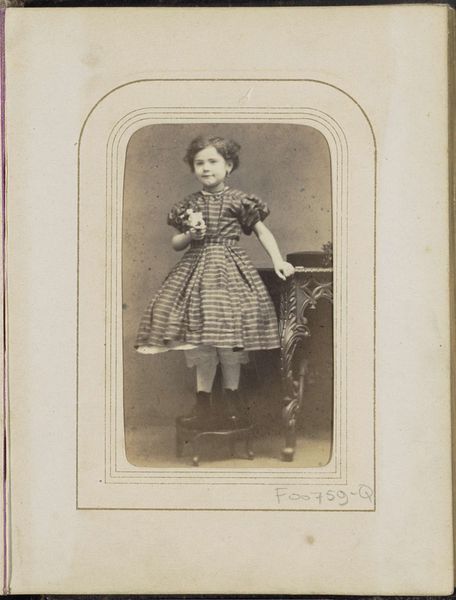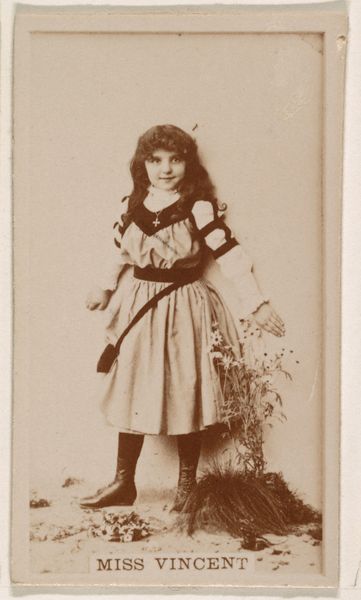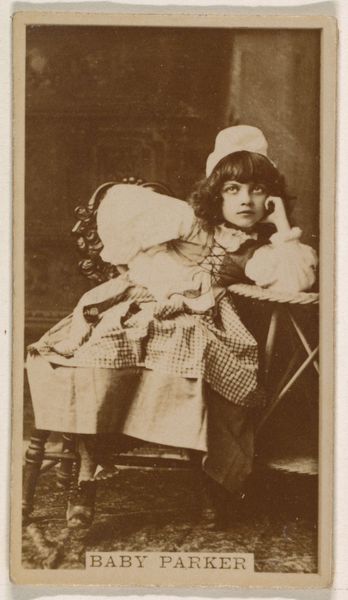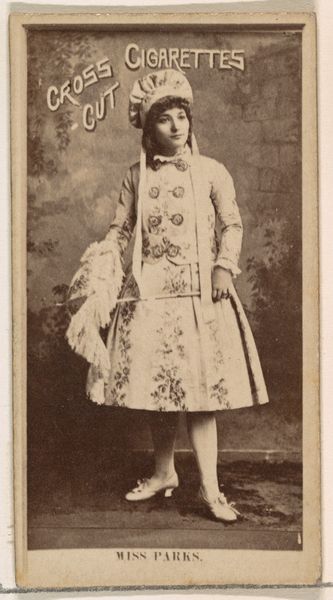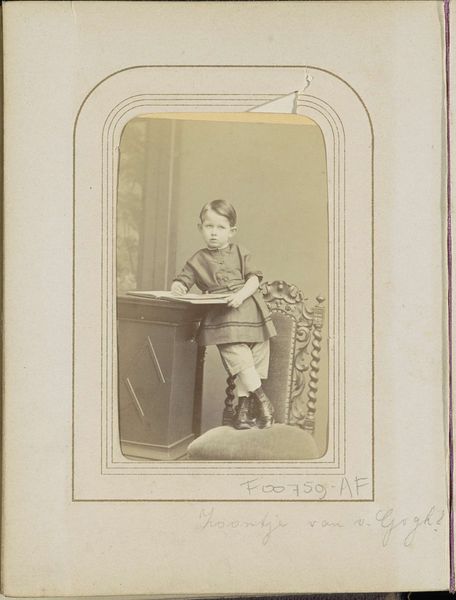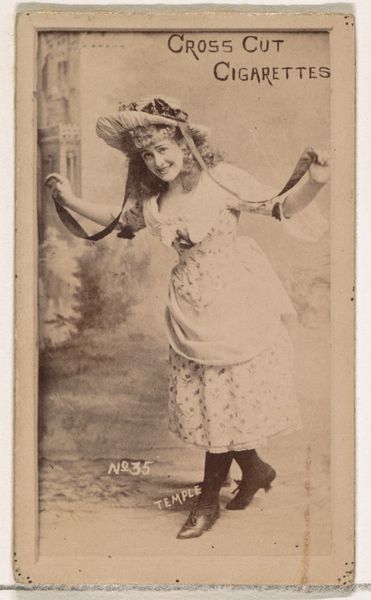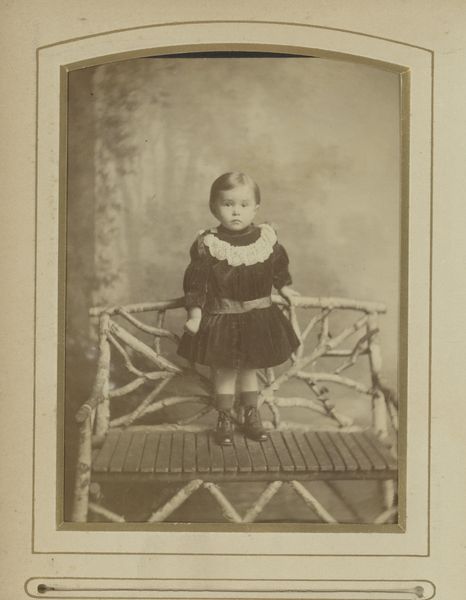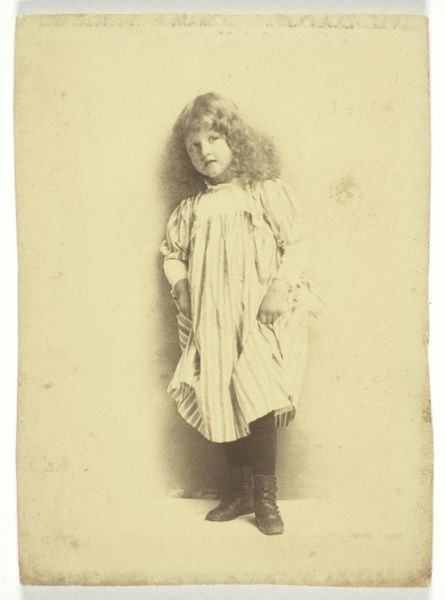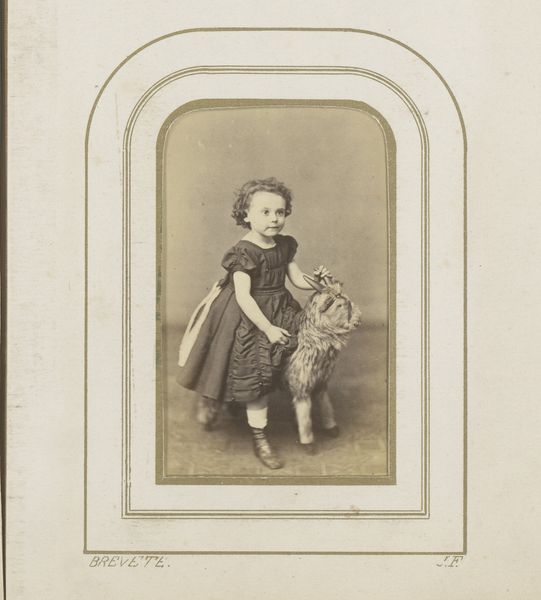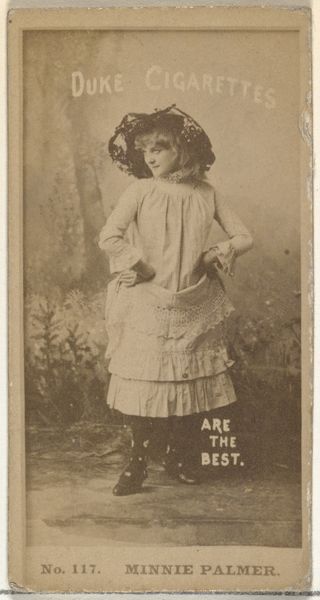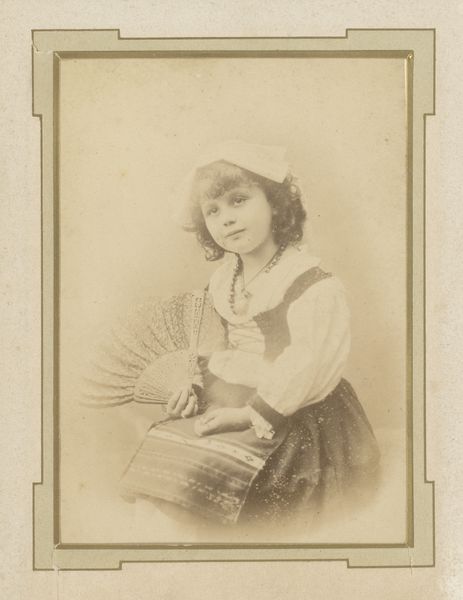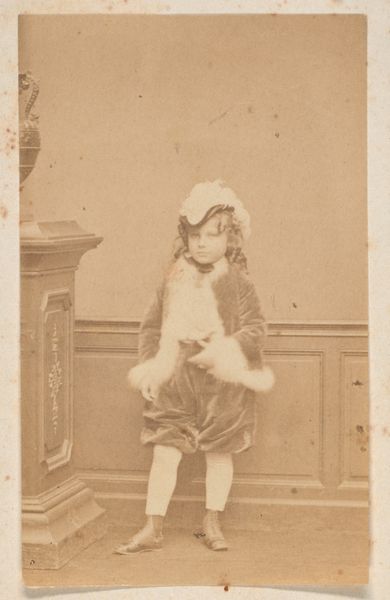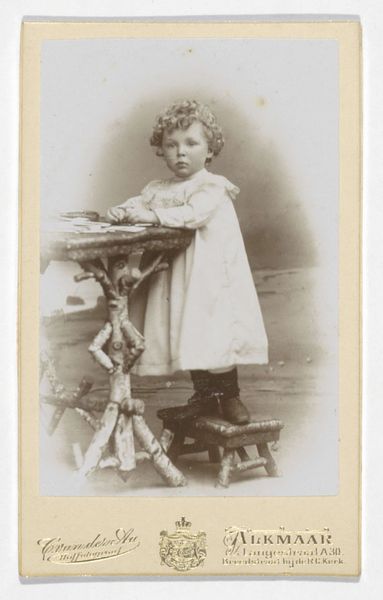
photography
#
portrait
#
photography
#
historical photography
Dimensions: height 85 mm, width 51 mm
Copyright: Rijks Museum: Open Domain
Albert Greiner likely made this photograph using the wet collodion process, a technique that dominated the mid-19th century. This process involved coating a glass plate with a light-sensitive emulsion, exposing it in the camera while still wet, and then developing it immediately. The result is a finely detailed negative, from which multiple prints could be made on paper. The sepia tone of the image, a result of the printing process, lends a sense of nostalgia. Photographs like this were part of a rapidly expanding visual culture, fueled by technological innovation and industrial production. The rise of photography democratized portraiture, making it accessible to a wider segment of the population. This stands in contrast to painting, which remained the domain of the wealthy elite. Understanding the photographic process helps us appreciate the social and cultural significance of these images, challenging traditional distinctions between fine art and everyday life.
Comments
No comments
Be the first to comment and join the conversation on the ultimate creative platform.
